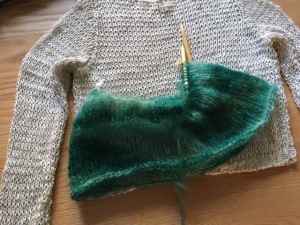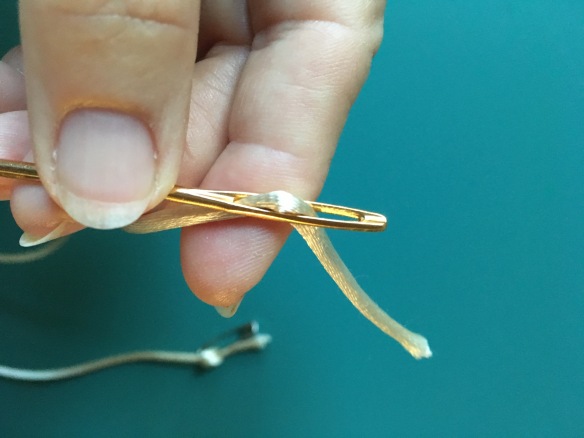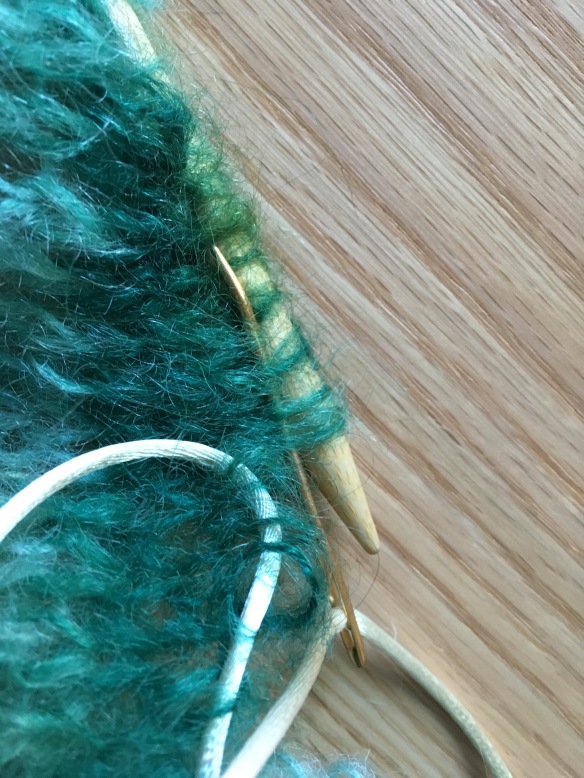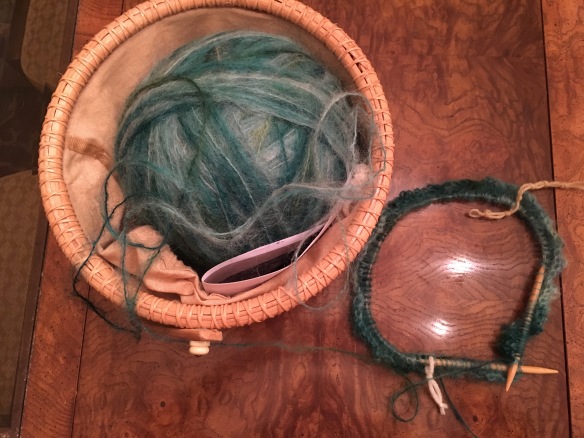Working with mohair yarn
I prefer the variegated color of mohair yarn for the mystery of how the colors will show in the pattern and so the eye gets distracted from the inconsistency of stitch tension. Working with mohair can be a challenge, so I don’t recommend it for beginners. The challenges come with the light airy fibers tangling with each other and the thinness of the yarn. Thus, missing or adding stitches in numerous ways. One tip to prevent the yarn from slipping off the needle, as I knit a stitch I hold the stitches following the stitch being knitted with my second finger. To keep track of key rows or decreases, I use many small safety pins.
Blocking and finishing construction
Once the sleeves were finished, blocking the sweater came next with a gentle wash, squeezing and rolling in a towel. Then laying the sweater out on a layer of two towels, I stretched the sweater into shape measuring to make sure the sides and sleeves were even to each other and my original desired measurements.

Blocking sweater
Once the sweater was dry and after trying on the sweater I decided I wanted less fullness in the bodice. To do this without taking the sweater apart, I created a back inverted pleat. At the center back of the sweater I marked the center with a running stitch of satin cording that I removed after the pleat was completed.
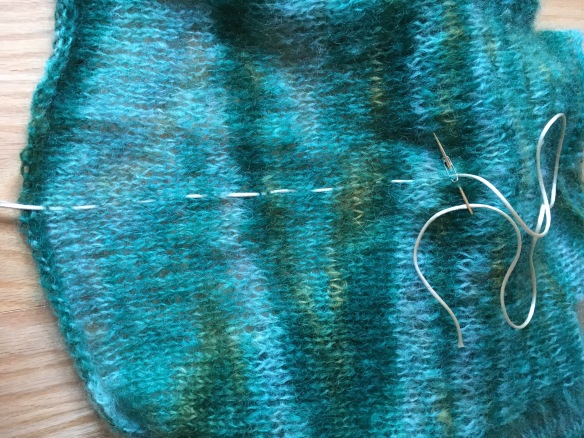
A running stitch of satin cording to mark the center back of sweater.

Measuring and pinning the inverted pleat
The pleat is held with hidden mohair yarn stitching on the inner and outer pleat folds, 1/4-inch from the folded edges.

stitching the inner pleat fold

stitching the outer pleat fold
The color-coordinating decorative glass antique 1-inch button from my stash tops the pleat. With the yarn ends woven into the sweater my sweater is finished!

View of the sweater back. The sweater is finished!
Thank you to my friend Vanessa for cheering me on in numerous ways so the sweater would get done in time for my trip. And thank you to those of you who followed my journey through the making of this sweater.
In the near future I will be showing you what I will be wearing with the sweater and let you get glimpses of my winter trip :)
In the meantime those of you celebrating Thanksgiving, may you focus on the family, friends and things in your life that you can be grateful for and be the example for others to be grateful for the small and big things of life.
Keep on being creative with Needle Arts~








